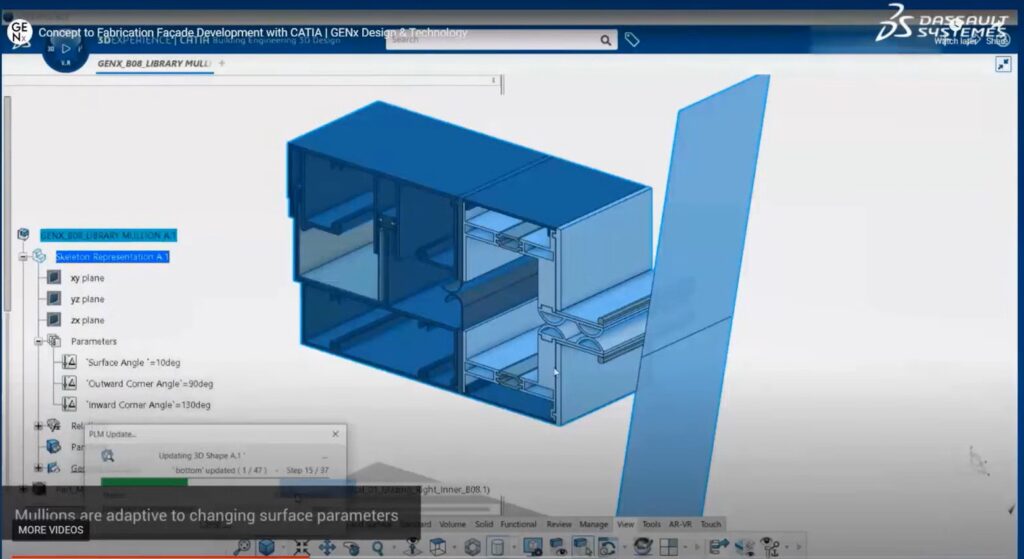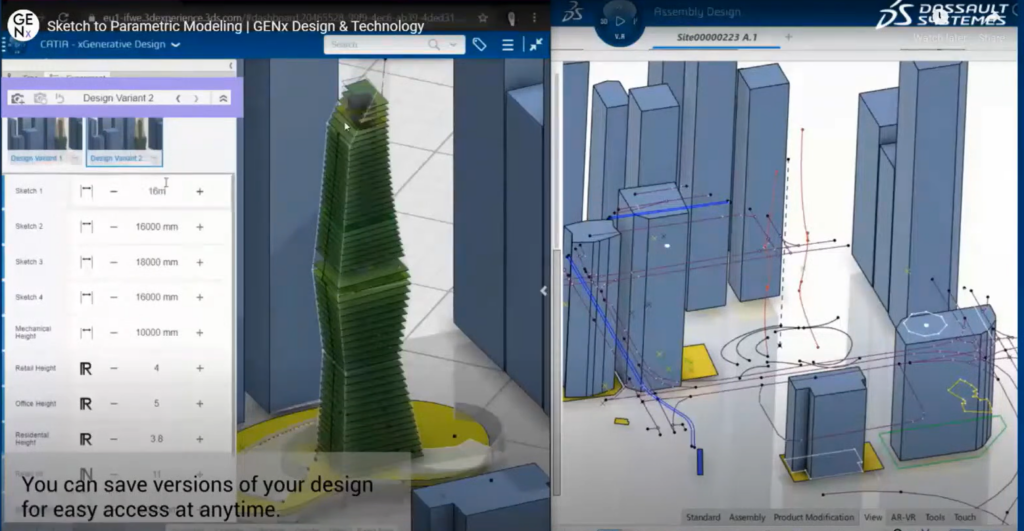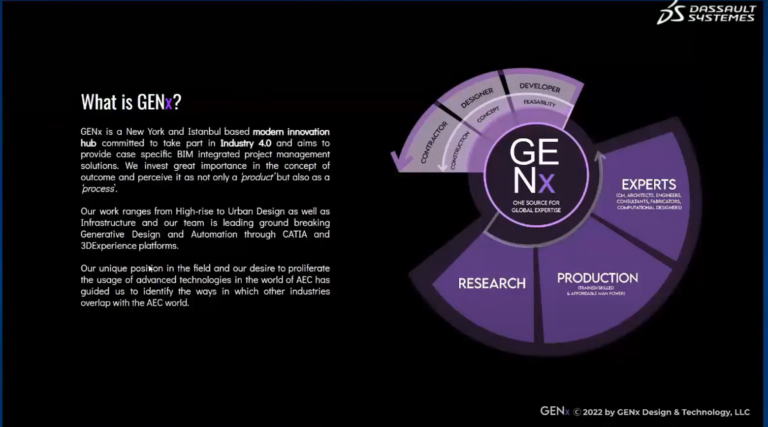Navigating the complexities of complex projects in architecture often presents challenges that necessitate innovative solutions. In this blog, we delve into the role of computational design in addressing these challenges. We explore the utilization of software solutions such as CATIA and xGenerative Design to streamline global collaboration and facilitate seamless communication between teams.
The integration of these tools has significantly impacted project delivery, enabling the breakdown of complex shapes into individual components and the successful completion of projects within set timelines.
The Role of Computational Design in Complex Projects
Today, we have the pleasure of welcoming John MiKesh, a computational designer at Genx Design and Technology. Genx Design and Technology is a consulting firm that assists building manufacturers in achieving complex projects. With a focus on communication between building manufacturers engineers and designers, they navigate the complexities of design intent, project complexity, and cost to ensure that complex projects become more manufacturable and remain under budget.
Genx Design and Technology utilizes a powerful web-based platform, CATIA, enabling their global team to collaborate seamlessly between their New York and Turkey offices.
The software’s ability to streamline global collaboration has been a game-changer for the firm, allowing it to effectively navigate the complexities of project design and fabrication. Through the utilization of CATIA, Genx Design and Technology has been able to achieve a seamless exchange of information and data, resulting in enhanced productivity and successful project outcomes.
The Power of xGenerative Design in Architecture
xGenerative Design is a key tool that has revolutionized the architecture and construction industry. With its built-in features, it has proven to be a game-changer in delivering complex projects. The software enables the encoding and embedding of vast amounts of information into the computational model, allowing for seamless collaboration and file sharing between global teams.
One of the most significant benefits of xGenerative Design is its ability to make life easier for computational designers as they work towards fabrication drawings. By having the design features already built into the system from the beginning, there is a reduced need to worry about them as deadlines and deliverables approach.

One of the key platforms that we use is 3DEXPERIENCE by CATIA. It is a very powerful web-based platforms that enables our global team to collaborate and share files between our New York and Turkey offices.- John Mikesh, Computational designer, GENx
Implementing xGenerative Design for Complex Projects
xGenerative Design has proven to be a powerful tool in the field of computational design, particularly in addressing the challenges of delivering complex projects. This innovative software solution has been utilized to effectively tackle intricate shapes and streamline the process of product system development. By leveraging xGenerative Design, complex shapes can be broken down into their individual components swiftly, allowing for efficient project management and execution.
The software’s capability to encode and embed a wealth of information into computational models beforehand has been instrumental in facilitating seamless adaptations to radical changes that may arise late in the project timeline. As a result, it significantly contributes to meeting deadlines and successfully completing projects.
Overall, the utilization of xGenerative Design has proven to be a game-changer in the realm of computational design, offering a robust solution for managing intricate projects and achieving optimal outcomes.

Conclusion
In conclusion, the utilization of software solutions such as CATIA and xGenerative Design has proven to be instrumental in addressing the challenges faced in delivering complex architectural projects. The integration of these tools facilitates global collaboration and seamless communication between teams, enabling the breakdown of complex shapes into individual components and the successful completion of projects within set timelines.
To watch this User Testimony and to discuss with thousands of CATIA experts, join the free online user community: go.3ds.com/catia
